Purdue team wins NASA Innovation Award in SUITS Challenge
10-06-2025
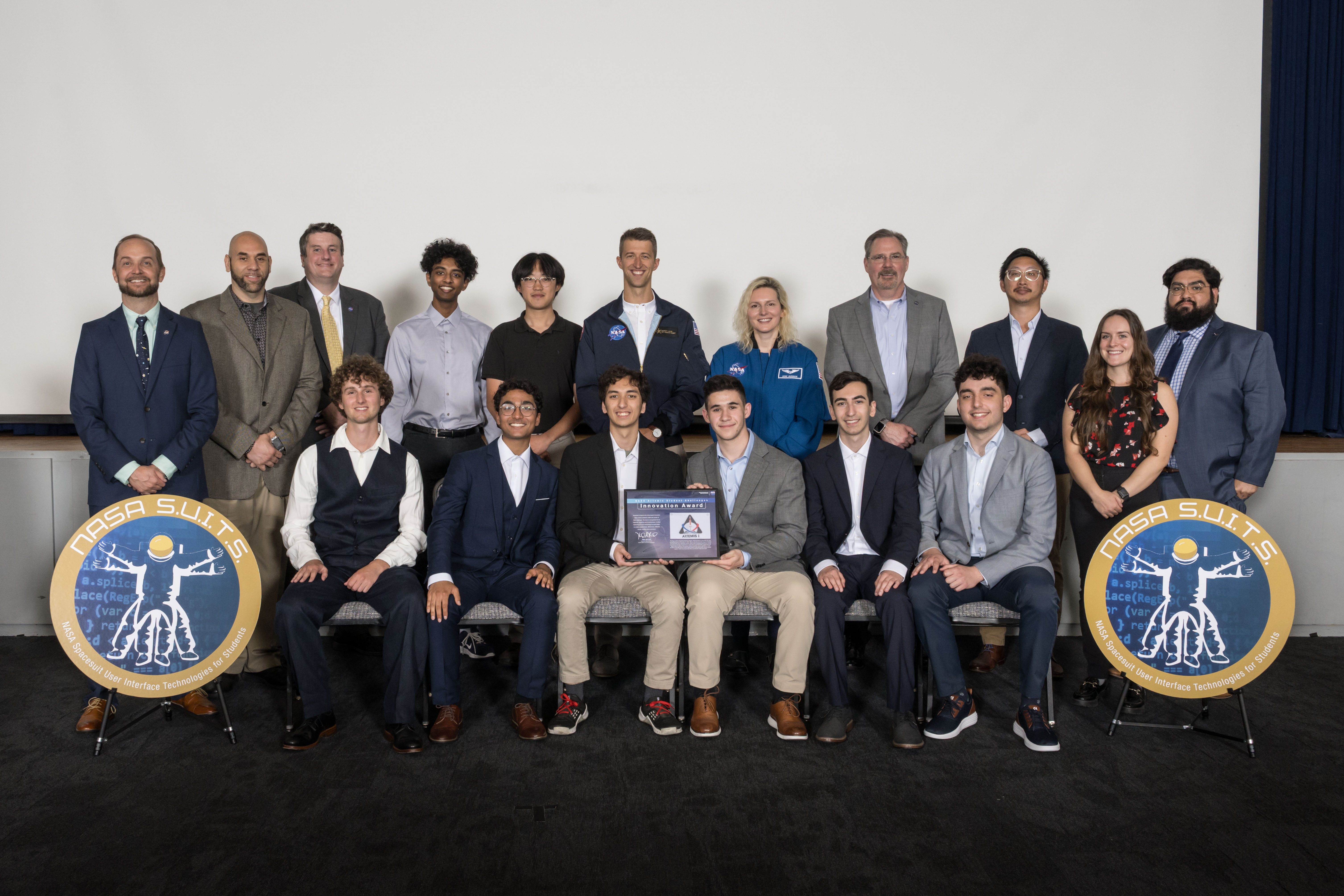
Team JARVIS receives the Innovation Award at NASA's Johnson's Space Center, pictured with Astronaut Deniz Burnham, Flight Director Garrett Hehn, and NASA SUITS Coordinators. Photo Credit: NASA - David DeHoys
Purdue University’s Team JARVIS has won the Innovation Award in NASA’s 2025 Spacesuit User Interface Technologies for Students (SUITS) Challenge, recognized for pioneering astronaut interface technologies that could shape future lunar and Martian missions.
The Purdue team, Team JARVIS, comprised of students from the Department of Computer Science, the Polytechnic Institute, the Department of Physics and Astronomy, the Daniels School of Business, and the College of Engineering, worked in collaboration with Indiana State University students to create new tools that improve how astronauts interact with spacesuits and rovers during planetary exploration.
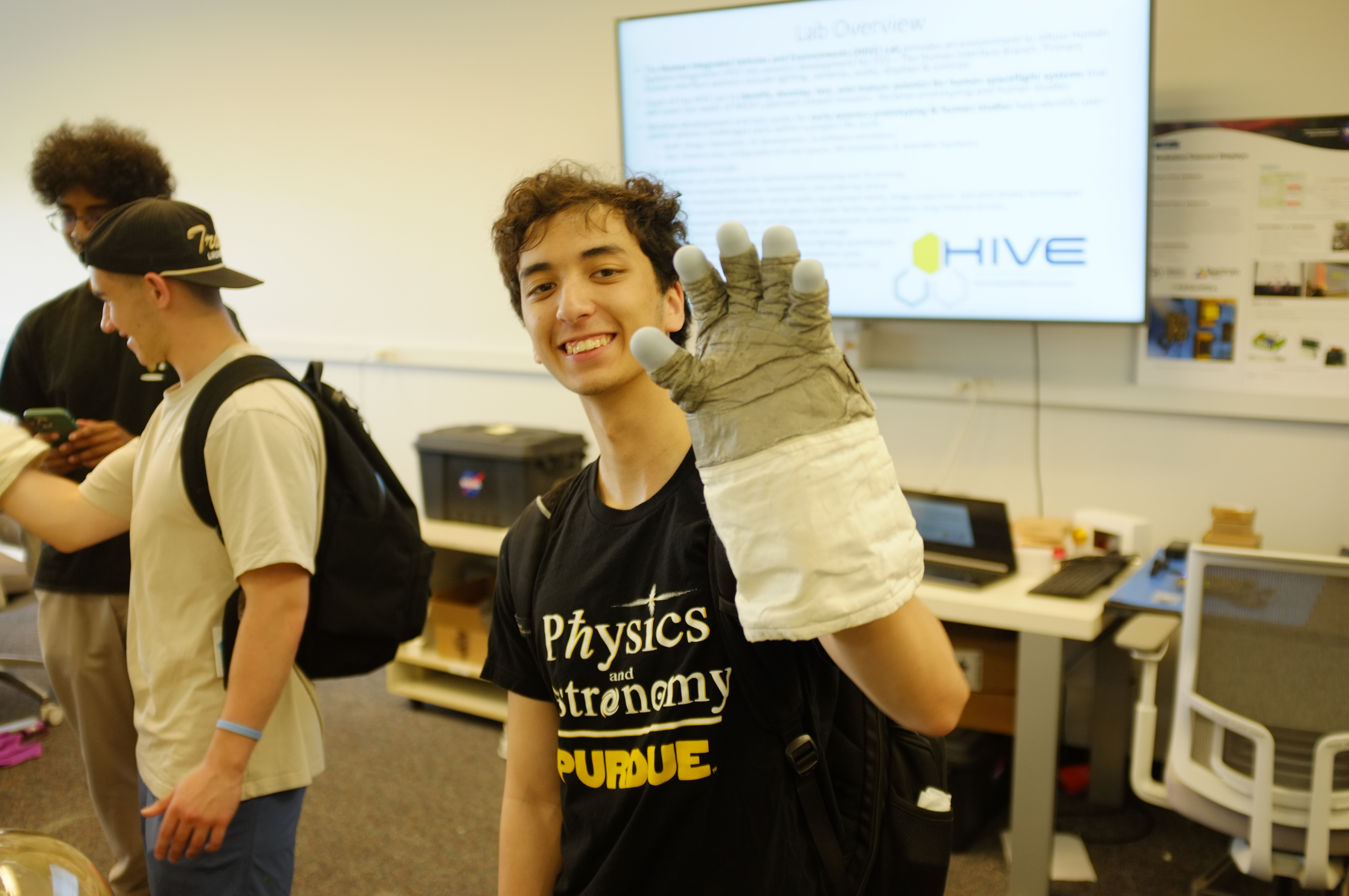
From left to right: Anand Shanker, Zach O’Connell, and Paul Greenberg play around with spacesuit haptics at NASA’s HIVE Laboratory. Photo Credit: Conor Ebeling
The team developed a user-friendly interface that allows astronauts to control suit functions and rover equipment more intuitively while performing tasks on the lunar surface. The interface incorporates streamlined menus, clear visual feedback, and adaptive controls to reduce cognitive load and improve efficiency, helping astronauts focus on exploration instead of navigating complex systems. Their design was tested at NASA’s Johnson Space Center in Houston, where teams demonstrated their solutions in the Rock Yard, a simulated lunar environment.
“Working on SUITS allowed me to develop skills very different from those I learned in class. While we were excited to visit the Johnson Space Center, it definitely wasn’t a vacation,” said Paul Greenberg, the Pathfinding & Optimization Lead. “We worked around the clock to finish development, respond to feedback, and polish a project representing a year of hard work. By the end of the trip, we were all tired, but it was still some of the most fun I had and an all-around amazing experience”
NASA selected Team JARVIS for the Innovation Award based on the originality and impact of their design, which stood out among projects from 12 universities nationwide, including Brown, Columbia, Rice, and UMich. The challenge provided students with the opportunity to address real-world engineering constraints, from user interface design to operational safety in space-like conditions.
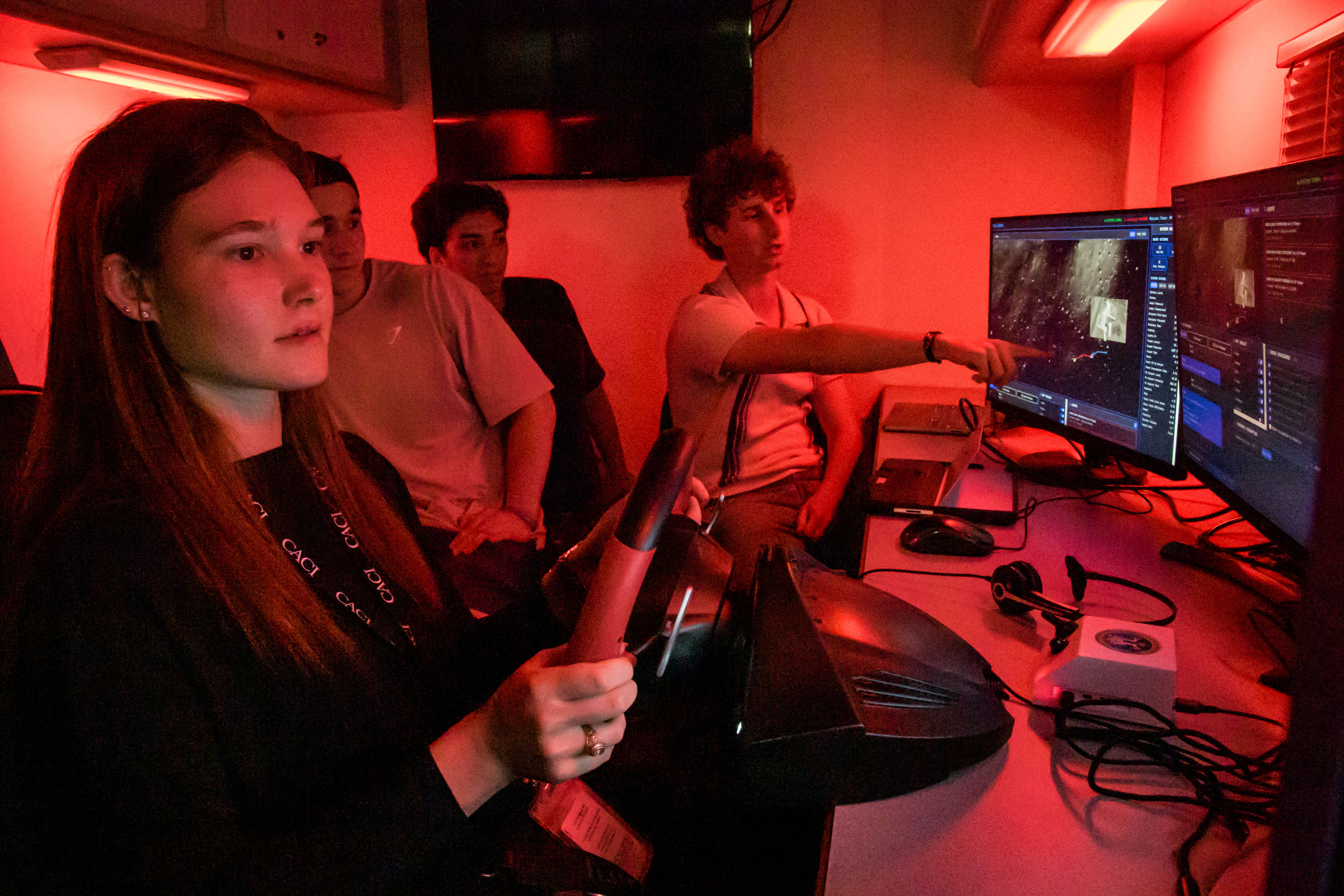
From right to left: Conor Ebeling, Paul Greenberg, and Zach O’Connell explain the team’s display and control interface to a NASA Design Evaluator on Day 1 of Testing. Photo Credit: NASA - James Blair
“The SUITS design challenge was the perfect opportunity to get involved with real work and challenges that NASA currently faces,” said Conor Ebeling, the Technical Lead. “Throughout the year, there are plenty of new skills and roles that you take on, culminating in testing and presenting our work at the Johnson Space Center in Houston for an entire week. I owe my growing interest in space to my work on this challenge, which has already opened doors for me, including interning at a lab at NASA this Fall.”
Purdue University has a long and storied history in space exploration, often referred to as the “Cradle of Astronauts.” The University has produced 30 astronauts, including Apollo 11 commander Neil Armstrong, and has contributed decades of research and innovation to NASA’s missions. Team JARVIS continues this legacy by advancing human spaceflight technologies and preparing the next generation of engineers for exploration beyond Earth.
The NASA SUITS Challenge is part of the agency’s Artemis program, which will return astronauts to the Moon and prepare for future missions to Mars. By engaging student teams in developing next-generation technologies, the program cultivates the skills and ideas needed for future space exploration.
The team’s recognition in the Innovation category highlights the university’s expertise in preparing students to tackle complex, high-impact challenges at the intersection of engineering, technology, and discovery.
Beyond designing innovative technology, Team JARVIS made it a priority to spark curiosity in the community. Their outreach events brought space exploration to life with trivia, Artemis updates, and interactive experiences.
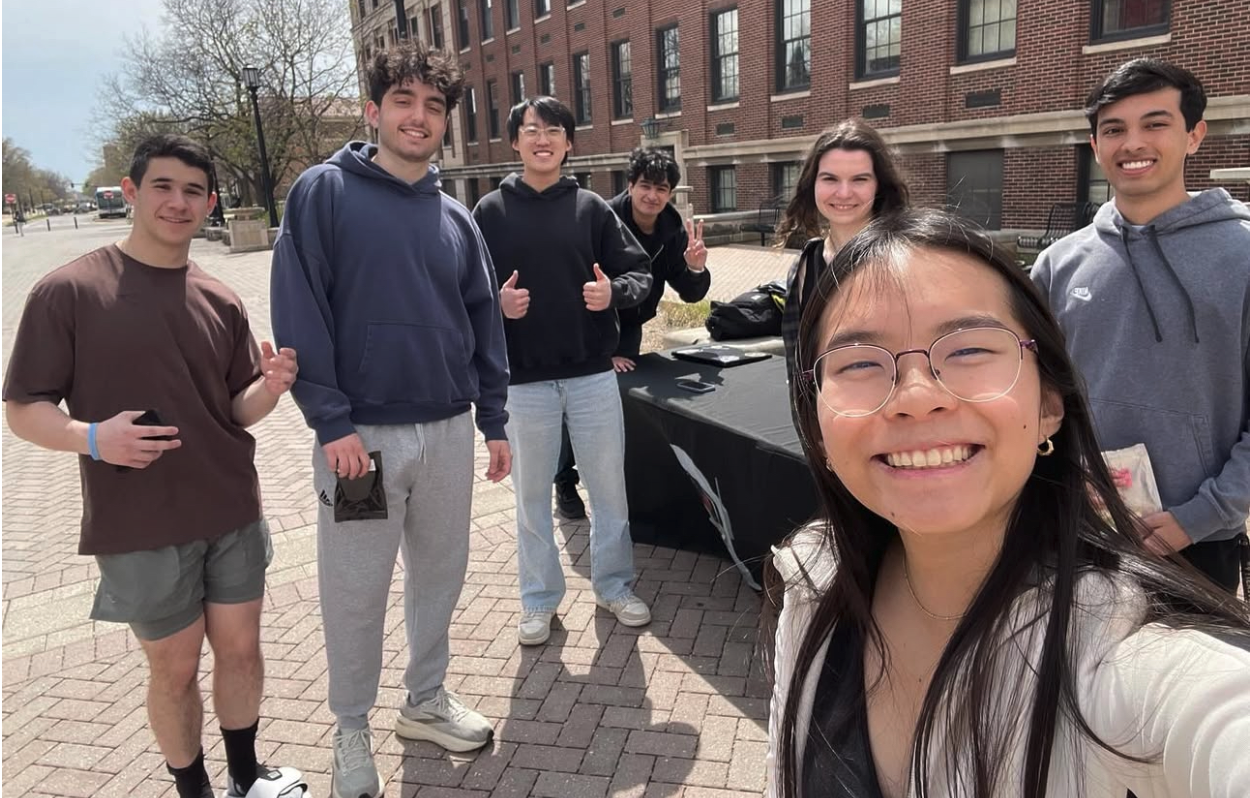
From left to right: Zach O’Connell, Benji Emini, Max Xu, Pranav Kumar, Amber Joneleit, Brianna Yu, and Sean VandenBussche, presenting at one of the team’s outreach events by engaging the community with space trivia, Artemis and NASA SUITS insights, and freeze-dried Skittles | Photo Credit: Brianna Yu
“At first, I wasn’t sure where I’d fit into the NASA SUITS competition since it seemed heavily focused on coding and technical development,” said Brianna Yu, the Lead Outreach Coordinator, “but when I learned how much outreach counted in the judging, I realized I could make a real impact by connecting with the public and sharing what our team was working on.”
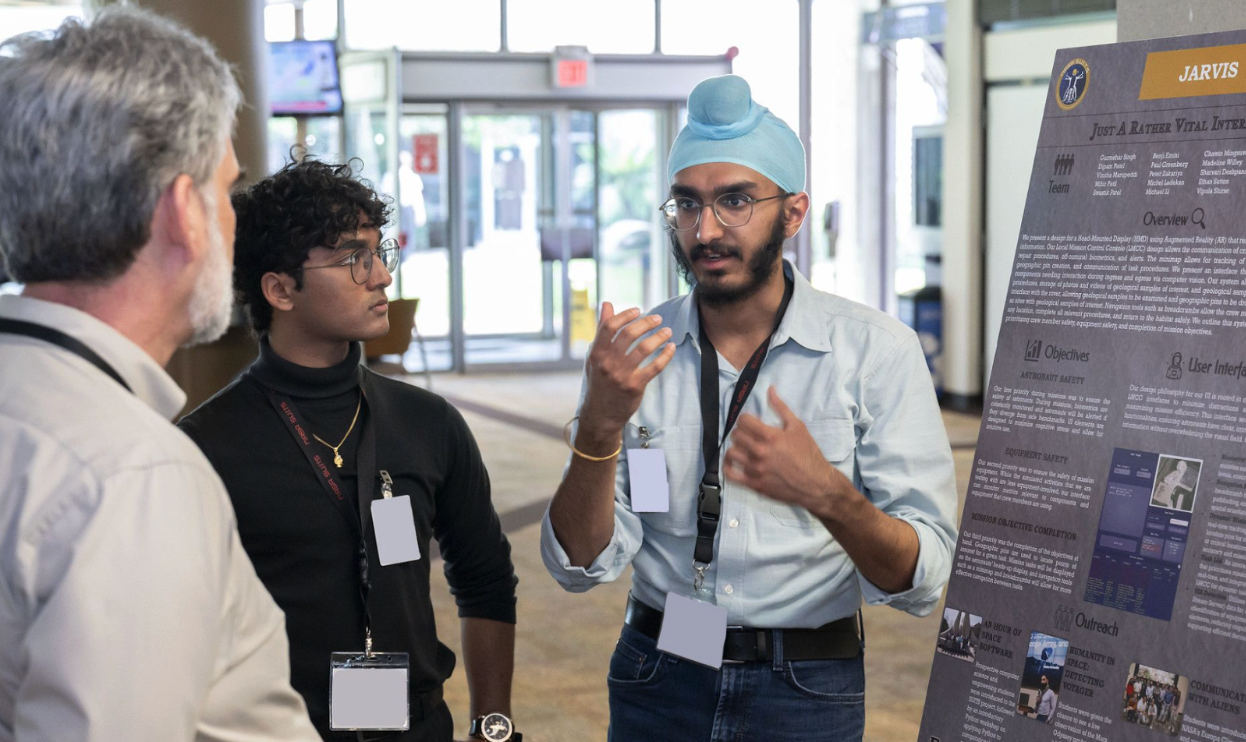
From right to left: Gurmehar Singh and Swastik Patel explain the team’s work to NASA Employees at last year’s SUITS Test Week Poster Session in May 2024. Photo Credit: NASA - James Blair
“Starting Team JARVIS and taking on NASA SUITS with no prior examples forced me to hone my decision-making skills,” said Gurmehar Singh, Technical Advisor and 2023–2024 Team Lead. “The mix of accomplishments and blunders that led us to Houston and earned us an award helped me grow immensely as an engineer and leader. Watching Swastik unite a phenomenal team the following year to win an even more prestigious award was a testament to the value of iteration. It’s impossible not to learn with a team this talented.”
“Taking over after Gurmehar was no easy feat, and the past year was far from all sunshine and rainbows,” said Swastik Patel, 2024–Present Team Lead. “But Team JARVIS showed me that the people you surround yourself with define the journey. I’ve been lucky to lead such hardworking and creative teammates, whose dedication won us the Pay it Forward Award last year and the Innovation Award this year. I couldn’t be prouder of them, and I can’t wait to dive back in.”
JARVIS Team members
- Swastik Patel (Computer and Information Technology)
- Conor Ebeling (Computer Science)
- Brianna Yu (Integrated Business and Engineering)
- Ethan Sutton (Computer Engineering)
- Paul Greenberg (Math and Physics)
- Peter Zakariya (Computer Science and Data Science)
- Zach O’Connell (Computer Science)
- Benji Emini (Computer Science)
- Anand Shanker (Computer Science and Applied Math)
- Max Xu (Computer Science and Math)
- Sean VandenBussche (Data Analytics)
- Sathvik Valluri (Computer Engineering)
- Purav Matlia (Computer Science and Artificial Intelligence)
- Pranav Kumar (Computer Science and Data Science)
- Christopher Gou (Computer Science and Math)
- Amber Joneleit (Computer Science)
- Zachary Nena (Computer Science and Data Science)
- Triston Hancock (Computer Science)
- Sophia Buechner (Nursing)
- Tom Chen (Computer Science)
- Michael Li (Computer Science, Marketing & Data Analytics, General Management)
- Ryan Leonard (Computer Science)
- Sejal Verma (Computer Science)
- Gurmehar Singh (Computer Science and Math)
About the Department of Computer Science at Purdue University
Founded in 1962, the Department of Computer Science was created to be an innovative base of knowledge in the emerging field of computing as the first degree-awarding program in the United States. The department continues to advance the computer science industry through research. U.S. News & World Report ranks the department No. 8 in computer engineering and No. 16 overall in undergraduate and graduate computer science. Additionally, the program is ranked No. 6 in cybersecurity, No. 8 in software engineering, No. 13 in systems, No. 15 in programming languages and data analytics, and No. 18 in theory. Graduates of the program are able to solve complex and challenging problems in many fields. Our consistent success in an ever-changing landscape is reflected in the record undergraduate enrollment, increased faculty hiring, innovative research projects, and the creation of new academic programs. The increasing centrality of computer science in society, academic disciplines, and new research activities — centered around foundations and applications of artificial intelligence and machine learning, such as natural language processing, human-computer interaction, vision, and robotics, as well as systems and security — are the future focus of the department. Learn more at cs.purdue.edu.